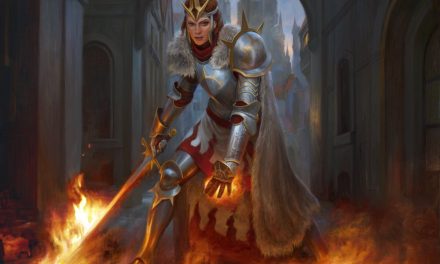With incredible agility and stealth skills, the Thief in D&D 5e is the archetype that many players imagine when thinking about Rogues.
These rogues are about as sneaky as it gets and know how to work quickly!
While your dime-a-dozen cutpurses and burglars may fit this category, the true Thief distinguishes themselves as a professional. They have worked hard to develop the skills necessary to have a long and rewarding adventuring career!
So maybe they still get “sticky fingers” from time to time. Chalk it up to the thrill of the Thief’s game!
Just keep plenty of opportunities for them to show off their skill (and a big payday as a reward!) and you’re unlikely to find a better ally for braving your next dungeon!
So let’s dive in!
This is the full subclass guide for the Thief Rogue in D&D 5e!
What is the Thief Rogue in D&D 5e?
Appearing in the 5e Player’s Handbook, the Thief in D&D 5e is a master of utility. They don’t particularly have any combat features that set them apart from other Rogue archetypes, but that does not make them useless!
Far from it!
You see, the Thief is an infiltration expert before anything else.
Lurking in the shadows, quickly using their trusty Thieves’ Tools to disarm traps and open locks, the Thief can get in and out of a location before anyone is the wiser!
These Rogues combine agility and a knack for improvisation to an incredible effect. They think quickly and move even quicker.
If anyone can find a hole in something’s defenses, rest assured that it will be the Thief Rogue!
Role in the Party
In combat, the Thief operates more or less like a standard Rogue. They want to pop in and out of the shadows to attack enemies to take full advantage of their Sneak Attack ability.
At level 9, this will get even easier as we’ll discuss in the next section.
But the Thief’s role in the party is primarily geared towards out-of-combat situations.
Finding and disarming traps, picking locks, and scouting are this archetype’s main responsibilities. Nearly every one of their archetype abilities directly enhances their ability to do these things.
Sometimes a situation requires someone with a steady hand, quick reflexes, and a keen eye. In many dungeons, not having one of these traits could mean certain death!
The Thief, however, is up to the challenge.

Thief Rogue Features 5e
The Thief in D&D 5e focuses heavily on abilities that let them get into places where they aren’t particularly wanted.
Disarming traps, picking locks, and moving quickly to stay out of sight are the skills they use to pay the bills!
Recommended: Sneak Attack in D&D 5e
Fast Hands (Level 3)
The first feature that you gain as a Thief at level 3 is Fast Hands. This adds some extra utility to the Rogue’s Cunning Action feature.
You can use the bonus action granted by your Cunning Action to make a Dexterity (Sleight of Hand) check, use your Thieves’ Tools to disarm a trap or open a lock, or take the Use an Object action.
You’d be forgiven for thinking that this is just a “nice to have” type of feature.
In truth, this has a huge effect on how the Thief Rogue plays and opens up a ton of potential options for you. Having more options is always nice, especially when it comes to managing your action economy.
Typically with your Cunning Action, you can choose to dash, disengage, or hide. With Fast Hands, your number of options has now doubled.
For example, you might want to make your Sleight of Hand check to pickpocket someone while you’re dashing past them. Maybe you’re trying to pull a lever in a dungeon that opens the escape while also defending yourself against some enemies.
Unlocking doors and disarming traps while in combat are the most common uses of this ability.
Some traps have ongoing effects that would otherwise take your full action to disarm. Likewise, something like picking locks on prisoners’ cells while you are fighting their captors may just net you some new allies in the combat!
To really get the best value out of this, you want to be on the lookout for creative opportunities where this feature can shine. In other words, look for ways to interact with your environment and think outside of the box.
Depending on your Dungeon Master, you might also be able to make a case for being able to attempt to pick a lock twice thanks to this ability. Your first attempt can be with a Bonus Action thanks to Fast Hands, but you can use an Action if necessary to try again if you fail.
Personally, I’d allow it, but always check with your DM!

Second-Story Work (Level 3)
The second ability that the Thief gains right off the bat at level 3 is Second-Story Work.
This ability helps your mobility. Specifically, you’re better at climbing and making running jumps.
Climbing no longer costs you extra movement.
In addition, when you make a running jump, the distance you cover increases by a number of feet equal to your Dexterity modifier.
It’s easy to knock this ability, but it’s another one of those cases where you’ll be thankful to have it when you need it.
The first part of this ability lets you climb faster than normal. Mechanically, this means that climbing doesn’t cost you extra movement now.
This could be useful for getting to an ideal position to Sneak Attack your enemies from above. It might also come in handy for getting into a building through an open second-story window so that you can toss a rope down for your allies while you secure the entrance point.
Even still, climbing quickly can save your bacon in a life-or-death situation. Climbing a wall while the room below you fills with lava is much less terrifying when you know you can move quickly!
As for the running jump bonus, it might come in handy for you? You are gaining extra distance covered by your running jump equal to your Dexterity modifier.
It’s something.
With a Dexterity score of 20, you’re gaining an extra 5 feet of movement when you get a running start on your jump. That could very well be the line between success and falling off of some castle ruins’ ramparts, but moments where you’ll really get to use this part of the feature are likely to be pretty rare.
Still, it’s better to have a tool and not need it than to need a tool and not have it!
Supreme Sneak (Level 9)
Level 9 is where the Thief Rogue gets an absolute banger of a feature.
Don’t be fooled by the simplicity! This is a game-changing bonus for you!
You have advantage on a Dexterity (Stealth) check if you move no more than half your speed on the same turn.
Stealth is the most important skill for the Thief Rogue, so gaining advantage this easily on something so important to the class is simply wonderful.
If you aren’t needing to zip all over the battlefield during combat, there’s almost no chance that the enemy will find you as you Sneak Attack and then hide each turn.
Assuming that you also chose the Stealth skill for your Rogue’s Expertise ability at level 1 or 6, you might as well be a shadow!
Because you did take Expertise in Stealth, right?
Recommended: Complete Guide to the Rogue in D&D 5e

Use Magic Device (Level 13)
Is there a more awkward feeling than finding a powerful magic item and then realizing that you simply can’t use it because you’re the wrong level, race, or class?
Well, at level 13, the Thief Rogue doesn’t know what that feels like.
You ignore all class, race, and level requirements on the use of magic items.
It’s a simple description with some seriously big implications!
Back in the days of 3e, Use Magic Device was a skill that anyone could put points in. (Feel free to imagine me saying that in a “crotchety old man” voice.)
You’d use this to activate a magic item, read a spell, or otherwise use a magic item that you normally couldn’t. (For example, an item that requires being of “Good” alignment that your Chaotic-Neutral character really wants to use.)
These days, however, the ability to improvise the use of a magic item is an ability given to level 13 Rogues who take the Thief archetype.
This is a seriously awesome and nifty passive feature to have.
Wands, scrolls, magical weapons… the world is your oyster! It’s now very rare that your party will find magic items with no one particularly willing or capable of using them.
Keep in mind that proficiencies with weapons and armor will still apply, though!
Also, don’t forget to share with your party! As cool as it is that you can now use that Wand of Fireballs, it might be a better tactical decision to let the Sorcerer have it.
Thief’s Reflexes (Level 17)
One of the best subclass capstone abilities in 5e (in my opinion, anyway) belongs to the Thief Rogue at level 17.
Brace yourself, because this is actually insane.
You can take two turns during the first round of any combat.
You take your first turn at your normal initiative and your second turn at your initiative minus 10. This feature can’t be used when you are surprised.
Considering just how much a Thief Rogue is capable of doing in a single turn (especially with Fast Hands in the mix), getting AN ENTIRE SECOND TURN FOR FREE is almost unhinged.
This feature is very simple in what it does and has some absolutely insane value for your character. Getting a whole extra turn means that you’re starting any combat with so many opportunities for all kinds of roguish shenanigans!
You will always be able to get the best positioning early in combat. You will always be able to rain Sneak Attack damage down before the enemy has had a round to fully wind up.
Whatever you do best, you will get to do more of!
And speaking of Sneak Attack, don’t forget that it’s used once per TURN and not once per ROUND. That means that you can hit an enemy with it on your first turn in the round and then again on your second turn in the round!
Even though this is only for the first round of combat, you can likely very quickly take an enemy or two completely off the board. Considering that your Sneak Attack damage at level 17 is 9d6, you’re looking at a cool extra 18d6 damage to the enemies in the first round!
This is just awesome. Plain and simple!
Just remember that the only time this feature doesn’t work is if you’re surprised. But this can be easily fixed by taking the Alert feat (if you never want to be surprised again) or just being extra careful.

Connections
The Thief is a classic fantasy staple which means that there’s no limit to the ways that you can connect your Thief to the world.
They might be from the city’s slums and had to learn the hard way to take what they need to survive without getting caught. After all, thieves and pickpockets tend to face harsh punishments if they’re caught.
Or perhaps your character is a professional who contracts with an elusive Thieves’ Guild and has been assigned to join the party.
Prefer to go freelance? Maybe they’re an independent agent who is looking for the score of the century. A character like Arsène Lupin, Catwoman, or Danny Ocean immediately comes to mind.
Even still, perhaps your Thief’s talents are strictly kept for dungeon delving and not robbing the common people.
If it requires a set of finely-honed skills and promises a solid payout, you can bet the Thief will take an interest!
Beyond that, it’s up to you to decide if there is honor among thieves.
Is the Thief Rogue Good?
The Thief in D&D 5e sits along the Assassin subclass as one of the quintessential Rogue archetypes.
Playing a Thief well relies on your own ability to think quickly and creatively. All in all, it’s one of my personal favorite subclasses in the game to play for precisely this reason!
Because so much of the Thief’s kit is based around improving the skills that most Rogues will be using constantly anyway, it’s also very accessible for new players. The subclass is streamlined in a way that a new player doesn’t have to memorize a bunch of new mechanics and can get straight into playing.
That said, it also doesn’t feel so “beginner-oriented” that it loses its fun. A Thief has a lot to offer the party!
These characters will almost always find new ways to interact with the world. As a DM, I love it when my players start asking for extra details as they try to “case the joint” and look for opportunities to think outside of the box.
Whether you are new to D&D 5e or have been playing since its launch, the Thief is always a solid option for nearly any type of campaign!
Related: Ranking Every Rogue Subclass in D&D 5e
Conclusion – Thief Rogue in D&D 5e
When it comes to getting into (and safely out of) trouble, the Thief is a master!
This is the type of class that especially caters to players who enjoy problem-solving. By poking at the game’s world and seeing what moves, they can add so much to any story.
So what if they aren’t one of the more combat-focused subclass options? There’s no substitute for skill and the Thief has skill in spades!
After all, someone has to disarm those traps if your group wants their payday!
What are your thoughts on the Thief Rogue in D&D 5e? Let’s chat in the comments!









